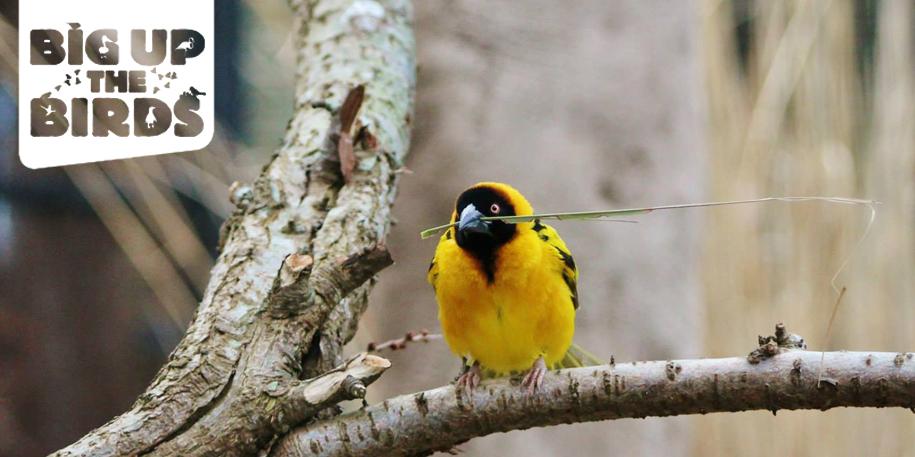Hurry! Save 25% on 2026 memberships!
Big up the birds and welcome to the weavers

With a whole host of species, from Australian rainbow lorikeets to white-browed coucals, birds make up over a third of the collection here at Blackpool Zoo but are often overlooked.
In the last few years we’ve been lucky enough to welcome plenty of new arrivals to the section, whether as hatchlings to our existing groups or as brand new species joining us for the first time. In 2014 we welcomed a number of new species, including the red-crested turaco, a fruit eating bird from Africa, and the Omei Shan liocichla, a bird native to only a very small region in China.
This trend looks set to continue through 2015, as we recently welcomed a long awaited colony of village weavers to the collection.
Village weavers, whose name comes from them residing near populated areas and farmland in sub-Saharan Africa, live a very social lifestyle in large flocks for safety. They are very noisy birds (especially during the breeding season) with a repertoire of about 15 calls.
Male birds weave elaborate nests from strips of leaves and grass, often in the same trees as wasps to deter predation. These complex constructions are thought to be able to last for up to 100 years. The entrance to the bell-shaped chamber is underneath and the male hangs upside down to attract a mate into his nest.
Since moving into their new enclosure here at the zoo, our resident males have already been hard at work building their nests, much to the excitement of our keepers – maybe we’ll hear the “chuck chuck” of a tiny weaver or two in the not so distant future!
These birds can now be seen outside the small primate house, along with spreo starlings and blacksmith plovers in our new African themed aviary.
As well as being an exciting and vibrant addition to the collection, the arrival of the village weavers takes our total number of bird species to 90 – a big milestone!
The growth of the section has been down, for the most part, to our Section Head of Birds, Johnpaul Houston, who is notoriously passionate for all things bird. He explained to us where his enthusiasm came from: “I’ve always kept birds, from small parrots to chickens. My grandfathers were a big influence, helping me build aviaries, taking me rambling with binoculars and keeping well stocked bird tables. Unsurprisingly, when I started my career as a zoo keeper, I was working with flamingos and tropical birds. I have always enjoyed a bit of variety though, and my guilty pleasures in zoo keeping are some of the smaller antelope – like dikdik, lesser kudu and duiker.”
To celebrate this milestone and as we get ready for what we hope will be a feather filled breeding season, we’ll be highlighting some of our resident birds in the coming weeks and months in a new feature across our social media pages, as we “Big up the Birds”.